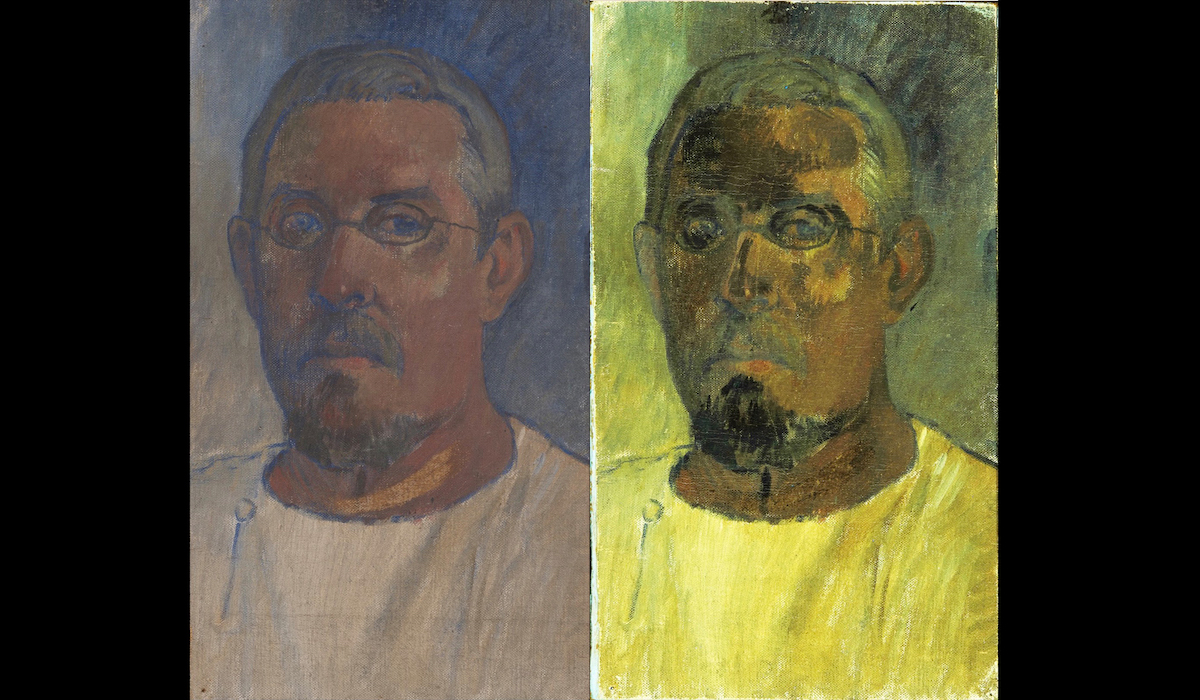The Kunstmuseum Basel has reaffirmed the authenticity of what is believed to be Paul Gauguin’s final self-portrait, Portrait de l’artiste par lui-même (1903), following months of forensic research, technical analysis, and consultation with international scholars. The investigation—prompted by questions from collector and Gauguin specialist Fabrice Fourmanoir—confirms that the painting is indeed by Gauguin. However, it bears traces of later retouching, likely carried out between 1918 and 1926.
The painting, long considered one of the museum’s treasures, came under renewed scrutiny when Fourmanoir suggested that all Gauguin works dated 1903 were forgeries, arguing that the artist was too ill to paint in the final months before his death on Hiva Oa, French Polynesia. He speculated that the self-portrait might have been produced after a photograph taken by Gauguin’s friend and nurse, Nguyen Van Cam, known as Ky-Dong.
Basel’s curatorial team responded with a meticulous investigation. Provenance specialists, conservation scientists, and nineteenth-century art historians examined the canvas from every angle. The pigments told their own story: titanium white, found in sections of the face, was not available until after 1918. Early photographs in the museum’s archive show that these areas were already present by 1926—firm evidence that the revisions were made posthumously, probably to enhance the work for sale.
Doubts about the painting’s authorship are not new. As early as 1924, its legitimacy was challenged when it appeared at auction. By 1928, the Kunsthalle Basel exhibited it under the cautious label “putative self-portrait.” When the painting entered the Kunstmuseum collection in 1945 as part of a bequest, then-director Georg Schmidt penned an unusually detailed accession report—acknowledging the questions that surrounded it while defending its artistic integrity.
This recent inquiry, supported by the Gauguin Committee at the Wildenstein Plattner Institute in Paris, has brought fresh clarity. The committee, responsible for Gauguin’s digital catalogue raisonné, independently verified the Basel findings and continues to list the painting under Autoportrait aux lunettes. Their conclusion aligns with the museum’s own: the brushwork, pigments, and compositional logic are unmistakably Gauguin’s.
During the investigation, the museum also received correspondence from Dr Lorraine M. Paterson of the University of Leicester, who is researching Nguyen Van Cam’s life. Her findings—drawing on rare archival material—shed light on Van Cam’s relationship with Gauguin and his role as caretaker during the artist’s final years. While she supports the theory that Van Cam may have assisted Gauguin in some late works, there is no evidence that he painted them himself.
Taken together, the new research suggests a more nuanced picture. Portrait de l’artiste par lui-même was almost certainly painted by Gauguin in 1903, at the end of his life, possibly with minor help from Van Cam. The later retouching—executed by an unknown hand between 1918 and 1926—does not alter the piece’s essential authorship.
What emerges from this investigation is not a question of forgery. The self-portrait, painted in the isolation of Polynesia, stands as Gauguin’s final confrontation with mortality. The modern layers, faint though they are, only add to the story: a work that has lived through doubt, revision, and rediscovery.
Photo: Kunstmuseum Basel, Vermächtnis Dr. Karl Hoffmann. Photo: Max Ehrengruber

